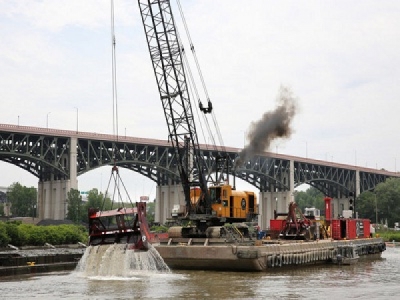
Posted on December 4, 2018
The U.S. Army Corps of Engineers, Baltimore District, received more than $13 million in additional funding to continue critical missions in the Chesapeake Bay watershed, including Mid-Bay Island design, the Chesapeake Bay Comprehensive Plan, Fishing Creek jetty repairs, Ocean City Inlet dredging, and operation and maintenance activities at dams to include construction of a new water treatment plant at Raystown Lake, a news release states.
This funding is through the 2019 Work Plan for the Army Civil Works Program, which is congressionally-authorized funding for the Corps of Engineers, in addition to the $80.8 million in funding outlined in the 2019 Administration’s Budget for Baltimore District.
The U.S. Army Corps of Engineers headquarters is required to submit a work plan to Congress annually. Headquarters (USACE), working with the Office of Management and Budget, determines the allocation of these funds.
Work eligible for consideration for the additional funding includes projects, programs and activities funded in the three previous fiscal years, with emphasis on ongoing work that can attain a significant milestone or produce significant outputs in the fiscal year.
“This additional funding is vital for us to carry out the important missions and programs we deliver for the benefit of the Bay region,” said Colonel John Litz, Baltimore District commander.
Baltimore District received approximately $4.3 million to continue ongoing pre-construction engineering and design efforts for restoration of James and Barren islands, through the placement of dredged material. Design efforts could be completed in less than four years with continued funding.
Once constructed, these islands would replace Poplar Island as the site for dredge material placement from the approach channels to the Port of Baltimore with the capacity to contain up to 95 million cubic yards of material within the next 40 years or more, the release states.
Baltimore District received $133,000 for completion of the Chesapeake Bay Comprehensive Water Resources and Restoration Plan, which identifies thousands of candidate aquatic ecosystem restoration, enhancement and conservation projects throughout the Chesapeake Bay Watershed.
The final report will identify at least one project in each Bay state and the District of Columbia that can be considered for implementation or technical assistance by the Corps of Engineers or local jurisdictions.
In support of navigation missions, Baltimore District received about $1.6 million in additional funds. Of these funds, $1.35 million is designated for jetty repairs in Fishing Creek in Anne Arundel County, which supports both nearby naval operations and commercial and charter fishing.
The remaining $250,000 is designated for maintenance dredging of the Ocean City Inlet navigation channel, with dredged material being beneficially reused through placement offshore along Assateague Island, south of the inlet.
Baltimore District received approximately $1.3 million in additional funds that will augment operation and maintenance efforts at three of Baltimore District’s flood risk management dams, all of which also serve as Corps of Engineers-managed recreation areas. The projects receiving additional funds are Raystown Lake and Cowanesque Lake in Pennsylvania and Jennings Randolph Lake, which straddles the border between Maryland and West Virginia. Of note, Raystown Lake received $1 million for the construction of a new water treatment plant.
The Baltimore Harbor and channels project received $4.95 million for Baltimore District to provide to the Maryland Port Administration for operation and maintenance activities through the Donor and Energy Transfer Port.
Baltimore District also received an additional $800,000 for the W.R. Grace-Davison Curtis Bay facility located in South Baltimore. This facility is part of the Formerly Utilized Site Remedial Action Program, which the Corps aids in the investigation and cleanup of sites previously used during the nation’s early atomic weapons and energy programs. This funding will be used to begin remedial design for the radioactive waste disposal area.
Source: The Star Democrat





